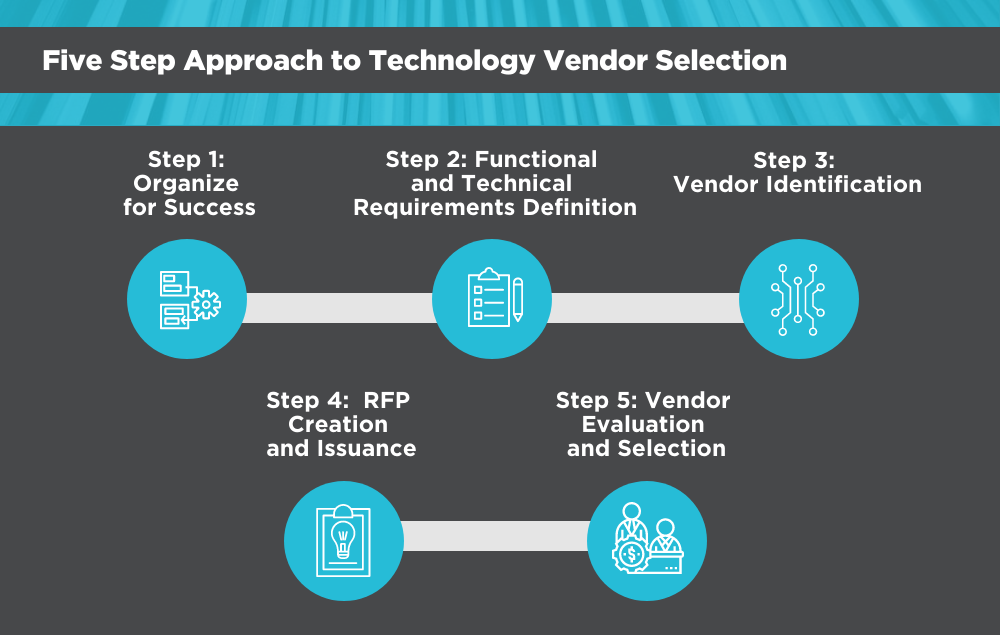
The approach to selecting a technology solution not only impacts the path to implementation but often the return on the investment. By following a defined process, companies can avoid stakeholder indecision and ensure the selection meets business goals, cost requirements, and user experience expectations.
ScottMadden’s technology consulting helps organizations overcome pain points by providing clear, practical guidance. Through our engagements, ScottMadden has developed a five-step technology vendor selection approach which enables organizations to efficiently navigate the vendor selection process and get the most out of its investment.

Step One: Organize for Success
The first step in selecting a technology vendor focuses on foundational elements. This involves finalizing an approach and work plan, confirming deliverables, requesting background information and current state data, and developing project communications.
Step Two: Functional and Technical Requirements Definition
With data available, the focus shifts to assimilating and analyzing current state. This typically involves conducting stakeholder interviews. The data analysis and interviews aim to gain insight into current pain points, lack of work optimization, and overall organizational performance. This lays the groundwork for the requirements needed in a new system.
This stage results in a high-level overview of process inefficiencies and areas where current technologies are underutilized or ineffective. During this stage, high-level requirements are identified for all core, in-scope processes. The requirements are then evaluated against pain points to establish a prioritized weighting for requirements. The prioritized requirements are the basis of the Request for Proposal (RFP) evaluation.
Step Three: Vendor Identification
With requirements identified, it is time to establish a short list of technology providers. This is achieved through issuing requests for information, reviewing potential vendors to satisfy requirements, and developing a final list of vendors to receive RFPs.
Step Four: RFP Creation and Issuance
The goal of this step is to evaluate vendors and enable more productive discussions and demos with vendors. Without requirements, sales teams focus on the items most important to the vendor or their latest “look and feel” or niche automation. The typical RFP packet includes:
- Information about a company and its technology replacement goals
- Guidance to vendors about key processes or use cases needed in a technology demonstration
- High-level requirements for each in-scope function
- Scoring criteria outline
Step Five: Vendor Evaluation and Selection
In the final step, RFP responses are received, and technologies are evaluated and graded, leveraging the scorecard created during the RFP creation and issuance phase. Once technologies are scored, suitable vendors receive an invitation to demonstrate their solutions. At this point in the process, the company should have the knowledge and scorecard to back vendor selection.
In Summary
Technology impacts day-to-day operations within an organization. Tackling a new vendor selection without a proven approach that addresses the existing gaps, stakeholder concerns, and impacts on people and processes is a common pitfall. By conducting due diligence during the organizational phase through the vendor evaluation and selection phase, an organization can fully realize the benefits of technology. ScottMadden provides informed and objective assistance to work through the dynamics of organizational decision-making so companies can avoid the pain points associated with selecting a vendor in a market with much saturation.


